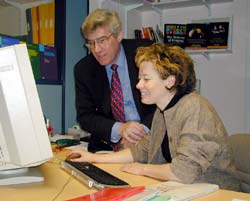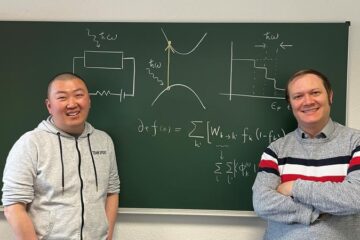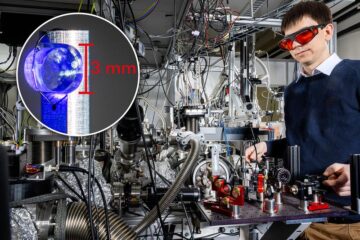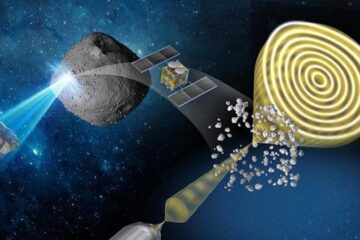Latest News

Scientists find first active ’jumping genes’ in rice
University of Georgia researchers studying rice genomes under a National Science Foundation Plant Genome Research Program award have identified the species’ first active DNA transposons, or “jumping genes.” The research is published in the Jan. 9 edition of the journal Nature. In collaboration with researchers from Cornell, Washington University and Japan, geneticist Susan Wessler also discovered the first active “miniature inverted-repeat transposable element,” or “MITE,” of a

Mammoth project reveals frozen secrets
Which way does a mammoth skeleton point in Siberia? No, it’s not a Christmas cracker joke. To find the answer you have to look in a rather surprising place – the Institute of Physics’ new online archive.
In an article published in the first edition of Proceedings of the Physical Society in 1874, John Rae writes about the physical properties of ice and mammoth remains. He put forward a theory as to why so many of the mammoth skeletons found near the Yenesei river in Siberia had been found wi

When self-image takes a blow, many turn to television as a distraction
Whether you fancy yourself a jet-setting sophisticate or a down-to-earth outdoorsy type, a fast-track corporate star or an all-around nice guy, new research indicates that you probably tune out information that challenges your self-image by tuning in to television.
The findings, by Sophia Moskalenko of the University of Pennsylvania and Steven Heine of the University of British Columbia, are presented in a paper published in the January issue of the Personality and Social Psychology Bulletin.

UNC studies target molecular defects implicated in cancer, genetic diseases
In three separate studies, scientists at the University of North Carolina at Chapel Hill School of Medicine have shown that it is possible to correct defective molecular splicing pathways that would otherwise contribute to cancer, genetic diseases and possibly other disorders.
These corrections were accomplished by the insertion into the cell of antisense oligonucleotides, short strands of genetic material that target portions of RNA. RNA carries the DNA blueprint for cellular protein produ

Frequency of light-to-moderate drinking reduces heart disease risk in men
A 12-year study of 38,077 male health professionals found that men who drank alcohol three or more days per week had a reduced risk of heart attack compared with men who drank less frequently. Men who drank less than one drink a day had similar risk reduction to those who drank three.
Many epidemiologic studies have reported that moderate drinking–for men two drinks a day–is associated with a reduced risk of heart disease. This study looked at the relationship between quantity and frequen

Moon’s early history may have been interrupted by big burp, geophysicists claim
Using a state-of-the-art computer model of the lunar interior, geophysicists at the University of California, Berkeley, have shown that a mighty burp early in the moon’s history could account for some of its geologic mysteries.
The burp of hot rock, like a blob rising to the top of a lava lamp, would have lifted a blanket covering the moon’s core, allowing the core to cool quickly enough to produce a magnetic field.
The moon has long since cooled off and the global magne











